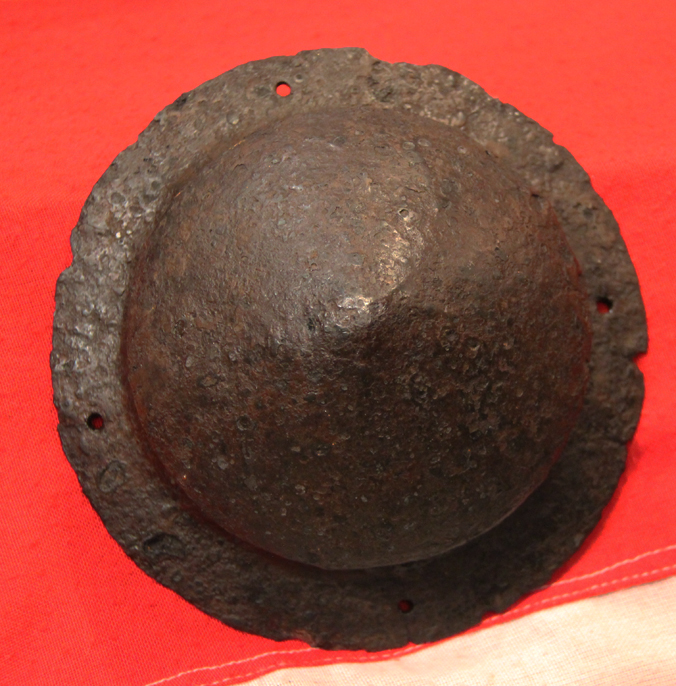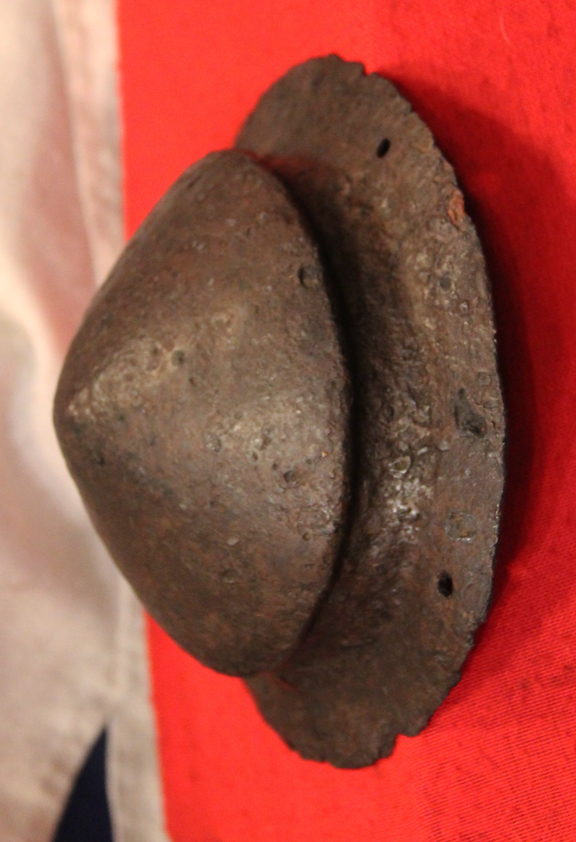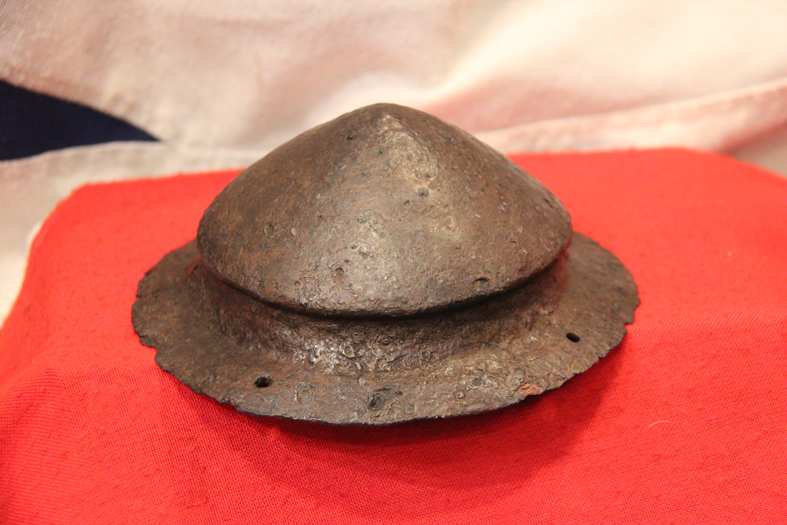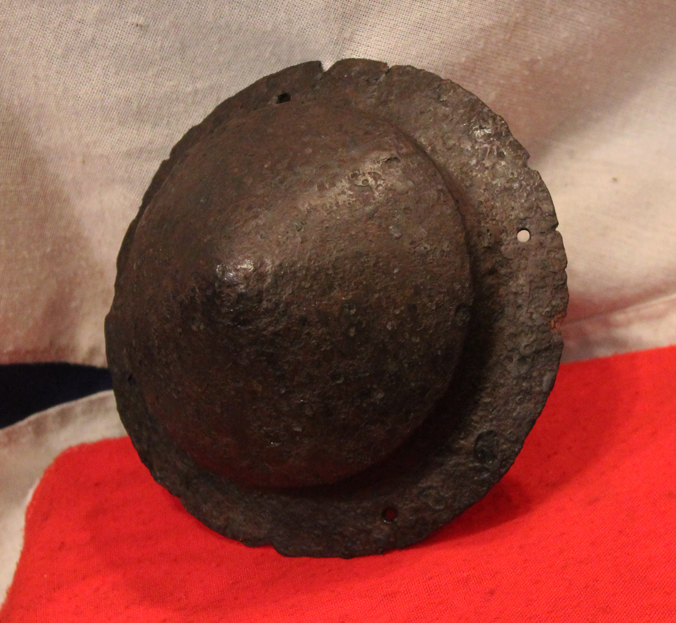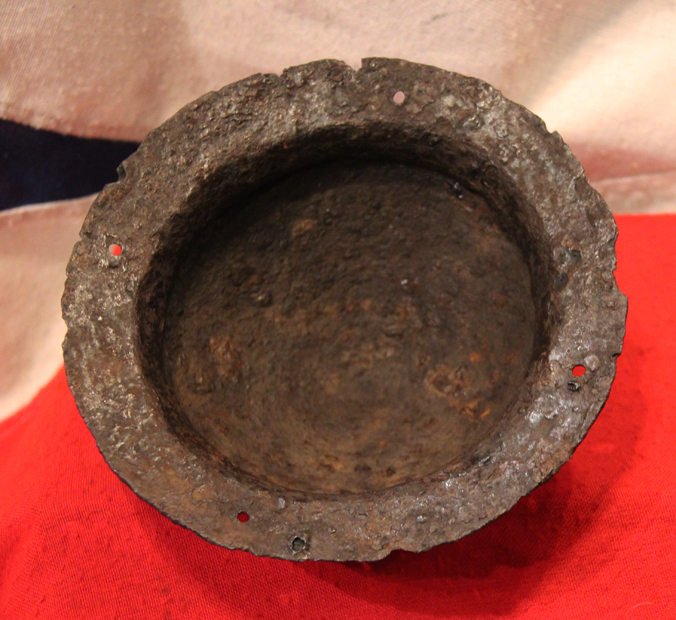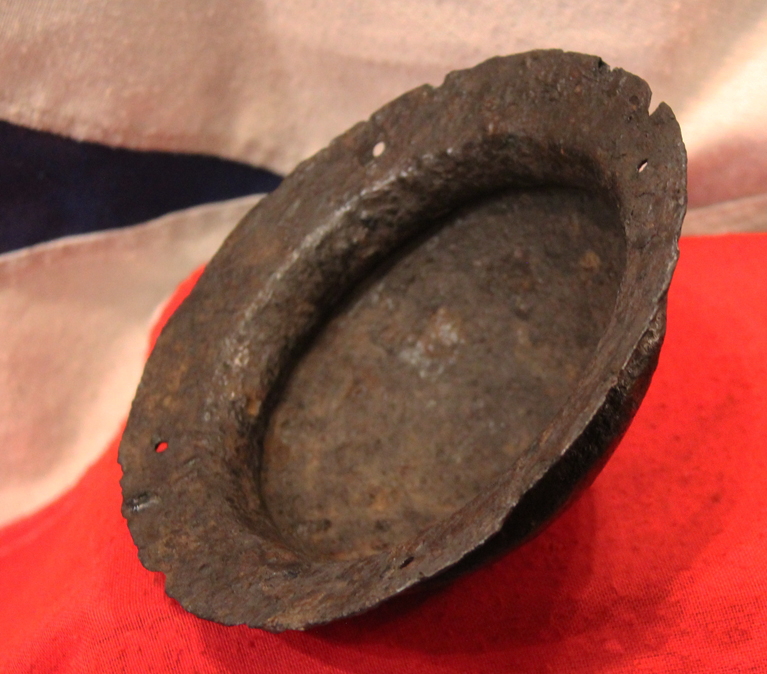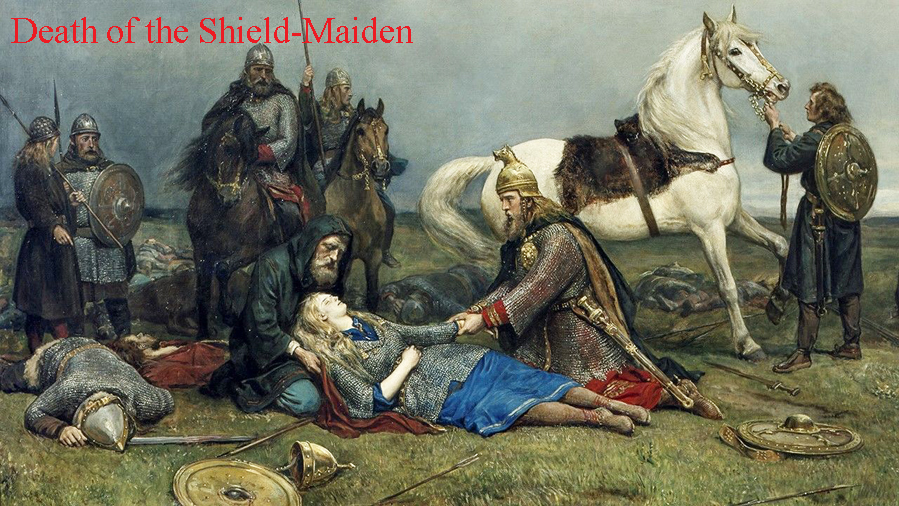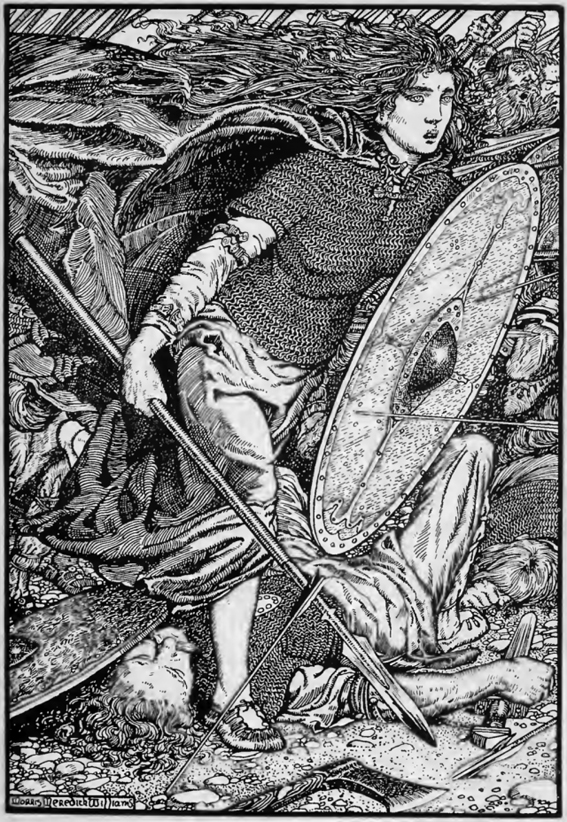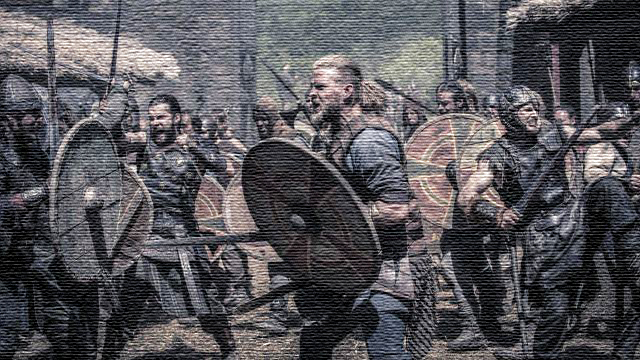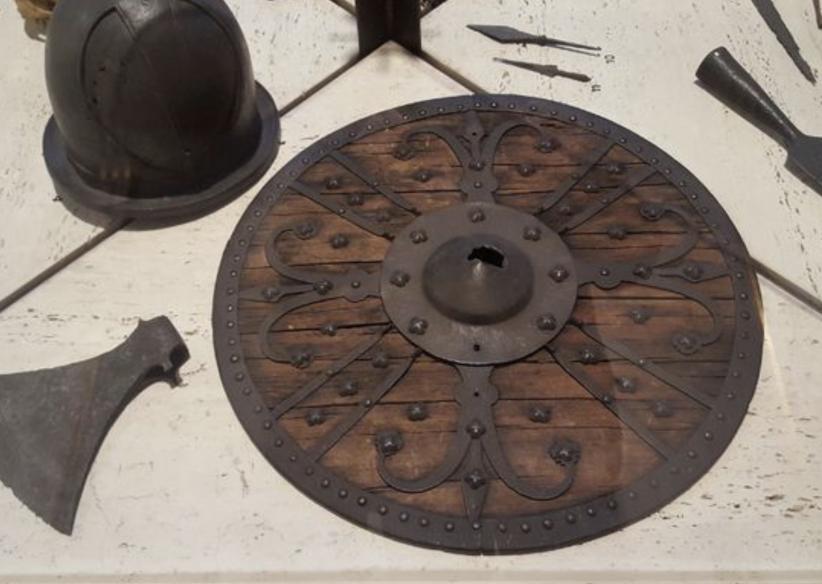A Truly Rare Piece, An Original Viking Shield Boss 1000 to 1100 Years Old “But waken ye now, warriors mine; seize your shields, be steadfast in valour, fight at the front, and fearless bide!’ From an Early English Translation of Beowulf.
10th to 11th century A.D. Circular boss, overall 6.3 inches across overall from rim to rim, central raised boss 4.75 inches across. Approx 3 inches deep back to front. A piece of original Viking weaponry such as this is only normally ever to be seen in fine museum displays. A fine opportunity to acquire a stunning piece of history of the incredible Viking age.
The British people’s have an unusual and respectful traditional relationship with the Viking Norsemen. Although they originally came as looters to pillage and sack many parts of Britain, many thousands of Vikings settled and integrated remarkably successfully into early England. So much so that one of the earliest, and considered one of the greatest surviving Early English texts, over 1000 years old, is Beowulf the legendary Old English poem of the Viking ruler.
In the Viking age, fighting men used large, round, wooden shields gripped in the center from behind an iron boss. A few shields have survived from the Viking age, notably the shields from the Gokstad ship, which date from the 10th century. The ship was equipped with 32 shields, several of which survive intact. They were made from a single layer of planks butted together, with no iron bands, and the fronts were painted black and yellow.
Broad headed iron nails passed through the flange and were either flattened, or clenched (bent over) on the reverse side of the shield to hold the boss in place. Surviving shields are made from spruce, fir, or pine. Again, literary evidence contradicts and suggests that shields were made with linden wood (Tilia, commonly known as basswood in North America). The word lind (linden) is used to mean "shield" in poems such as Voluspa , and the term lindiskjoldr (linden shield) is used in some sagas. Linden certainly has advantages over other species of wood for shield use. It is lightweight and does not split as readily under impact as do other types of wood. Incredibly there were laws at the time for the construction of shields. The Norwegian Gulathing and Frostathing laws specify the construction of a shield. The shield should be made of wood with three iron bands and a handle fastened to the back side by iron nails. A later revision of the law says that the shield should be made of a double layer of boards (tvibyror), and the front should be painted red and white.
Typical Viking shields were 80-90cm (32-36 inches) in diameter. Some were larger, such as the Gokstad shields, which were 94cm (37in) across. Based on surviving remnants, some shields appear to have been as small as 70cm (28in) in diameter. Presumably when a man made a shield for himself, he sized it to fit his body size and fighting style. A shield needs to be big enough to provide the desired protection but no bigger. A shield too small exposes additional lines of attack that an opponent might exploit, while a shield too large slows the defensive responses and exhausts the fighter unnecessarily.
All the surviving examples are made from solid butted planks, although literary evidence, such as the 10th century Frankish poem Waltharius, and the Gulating laws, suggests that shields were made of laminated wood. No archaeological evidence supports this style of construction during the Viking era in Norse lands. There is negligible archaeological evidence for iron-rimmed shields, although in chapter 40 of Grettis saga, it is said that a berserk carried an iron-rimmed shield to a duel against Grettir. When Bersi and Steinar dueled in chapter 12 of Kormaks saga, Bersi's sword stuck in the iron rim of Steinar's shield.
A leather sling, used to carry the shield over the shoulder (right), would have been common. There are many instances in the stories in which a fighter threw his shield over his back in order to wield his weapon with two hands, such as in chapter 53 of Egils saga. During a battle against Earl Hringr, Porolfr threw his shield over his back and thrust with his spear using both hands, eventually thrusting it through the earl's chest and out his back.
Shields were slung over the shoulder when not in combat, as well. In chapter 14 of Gull-Poriss saga, Porir went out to trim the manes of his horses. He worked with his shield hanging by his side. Bljugr attacked unexpectedly, thrusting at Porir with his spear. The spear glanced off the shield and entered the horse's belly, killing the animal. A 10th century Viking unearthed in the 1880s was like a figure from Richard Wagner’s Ride of the Valkyries: an elite warrior buried with a sword, an ax, a spear, arrows, a knife, two shields, and a pair of warhorses. And like a mythical Valkyrie (depicted above in a 19th century painting), a new study published today in the American Journal of Physical Anthropology finds that the warrior was a woman the first high-status female Viking warrior to be identified. Excavators first uncovered the battle-ready body among several thousand Viking graves near the Swedish town of Birka, but for 130 years, most assumed it was a man?known only by the grave identifier, Bj 581. For reference on this shield boss see Pedersen, Anne, Dead Warriors in Living Memory. A study of weapon and equestrian burials in Viking-age Denmark, AD 800-1000 Studies in Archaeology & History Vol. 20:1, 2014, for discussion of weapon-graves and weapon-sets. From the family collection of a London gentleman; formed in the late 1940s-1950s; thence by descent. As with all our items it comes complete with our certificate of authenticity. Almost every iron weapon that has survived today from this era is now in a fully russetted condition, as is this one, because only the swords of kings, that have been preserved in national or Royal collections are today still in a good state and condition. The last photo in the gallery is a collection of original Viking artefacts, Including a near complete Viking shield, on display in the Oslo Museum. ‘But waken ye now, warriors mine; seize your shields, be steadfast in valor, fight at the front, and fearless bide! From Old English translation of Beowulf.
Beowulf, Old English: Bēowulf ˈbeːowuɫf) is an Old English epic poem in the tradition of Germanic heroic legend consisting of 3,182 alliterative lines. It is one of the most important and most often translated works of Old English literature. The date of composition is a matter of contention among scholars; the only certain dating is for the manuscript, which was produced between 975 and 1025. Scholars call the anonymous author the "Beowulf poet”
It could look amazing box framed cased for display, we can have a bespoke one created if required.
Code: 21902

